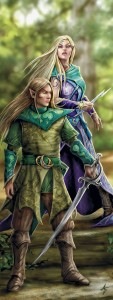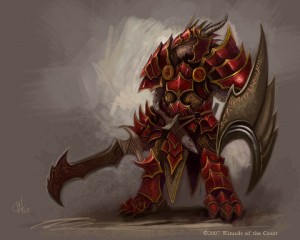 During their time in the library last week, the party discovered the floor plan to the Monastery. They knew only two rooms were on this floor. Even if there was more undead within, how difficult could it be to explore those two rooms and kill anything that shouldn’t be there? The heroes were about to find out.
During their time in the library last week, the party discovered the floor plan to the Monastery. They knew only two rooms were on this floor. Even if there was more undead within, how difficult could it be to explore those two rooms and kill anything that shouldn’t be there? The heroes were about to find out.
This week at our FLGS we ran a double session at both tables. The heroes had the opportunity to explore the two rooms that made up the main floor of the Dwarven Monastery before heading down to the caverns below. The adventure said that the PCs could explore the rooms in whichever order they wanted to. Since the rooms were likely to just be two back-to-back, hack and slash encounters with minimal role-playing, we decided to run them both tonight. My table decided to explore the Meditation Room (the week 12 encounter) first. The other table decided to explore the Sleeping Quarters first. But by the end of the night we’d all completed both encounters.


